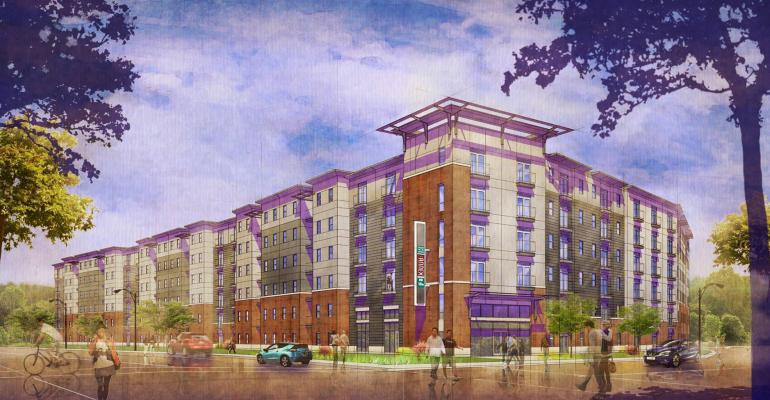Student housing developers are now building projects for much smaller schools than usual.
“This year will see the most new supply that we’ve ever seen at community and technical colleges at one time,” says Taylor Gunn, student housing analytics lead for data firm Axiometrics, based in Dallas.
Until recently, student housing developers focused nearly all of their energy on creating new properties in primary markets near the largest universities. As the real estate boom continued, developers have opened properties in secondary and tertiary markets. Now, several firms have turned to community and technical colleges.
In 2016, private developers will open new student housing communities at five community and technical schools. That’s up from just two community colleges and technical colleges that received new projects in 2015, and another two in 2014, according to a count from Axiometrics.
For example, General Capital Management, based in Milwaukee, is building Tech Village, a student housing property near Fox Valley Technical College in Appleton, Wis.
“You can roll out of bed and walk to your class in five minutes,” according to the developer.
Rents start at $5,000 for a bed in a double room for the academic year, from August through May. The new property will open 295 beds for the school, which has an enrollment of roughly 10,000 students.
“Projects delivering at technical and community colleges for 2016 average half the size of projects delivering at other universities, which makes sense given the size of these schools relative to a Florida State or Texas A&M,” says Gunn.
The other five student housing developments at community or technical colleges all had less than 200 beds. They include:
92 on-campus beds at Northeast Community College in Norfolk, Neb.
144 beds on-campus beds at Southeastern Community College in Whiteville, N.C.
124 beds off-campus beds at Marion Technical College in Marion, Ohio.
120 beds on-campus beds at Everett Community College in Everett, Wash.
The developers of these properties include Annex Student Living, based in Indianapolis, a rapidly growing student housing developer specializing in regional campuses, community colleges and Division II and III universities.
Challenges in smaller markets
These new communities may have to work harder to attract students. They are often the first student housing projects at the schools they serve.
“There’s a transition period when a market gets supply for the first time,” says Gunn. “It takes time for students to want to live in these new places.”
Enrollment for some of these schools could also pose a challenge. Over the last year, enrollments decreased slightly at two-year for-profit schools compared to the year before, according to data from the National Multifamily Housing Council (NMHC). Enrollment also inched down on average for four-year private non-profit institutions, though it improved slightly at the four-year public institutions where developers have built most of the current stock of student housing.
Overall, developers plan to open just 44,800 new student housing beds in 2016. That’s thousands less than was delivered to the market in both 2015 and 2014. Demand for student housing remains strong. The new beds planned to open in August 2016 were already 28.4 percent pre-leased as of December. That’s a 300-basis-point improvement compared to pre-leasing levels 12 months before for the school year that started August 2015. Rents have grown 2.2 percent compared to the year before, averaging $617 per bed per month, according to Axiometrics.

